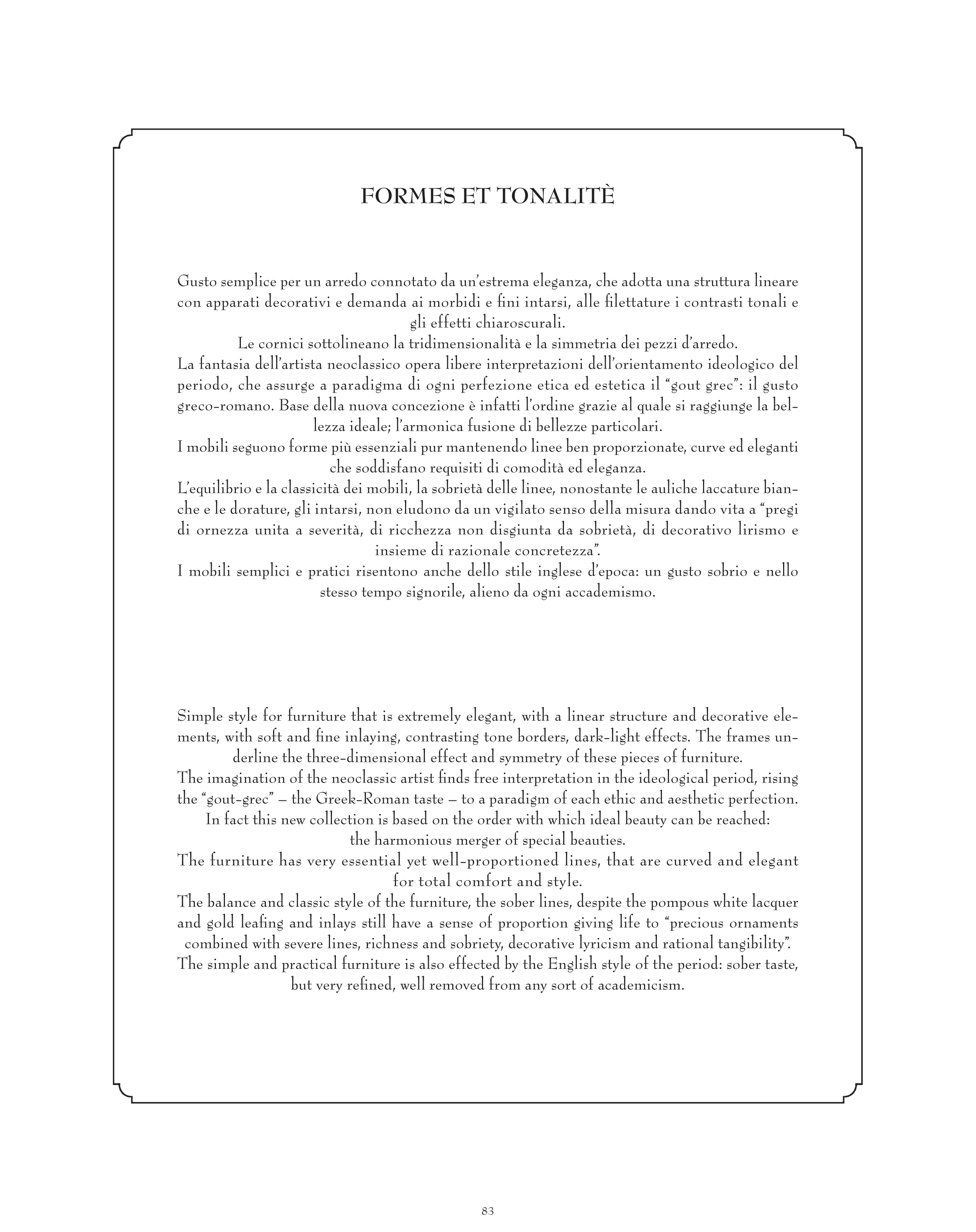FORMES ET TONALITÈ
Gusto semplice per un arredo connotato da un’estrema eleganza, che adotta una struttura lineare
con apparati decorativi e demanda ai morbidi e fi ni intarsi, alle fi lettature i contrasti tonali e
gli effetti chiaroscurali.
Le cornici sottolineano la tridimensionalità e la simmetria dei pezzi d’arredo.
La fantasia dell’artista neoclassico opera libere interpretazioni dell’orientamento ideologico del
periodo, che assurge a paradigma di ogni perfezione etica ed estetica il “gout grec”: il gusto
greco-romano. Base della nuova concezione è infatti l’ordine grazie al quale si raggiunge la bel-
lezza ideale; l’armonica fusione di bellezze particolari.
I mobili seguono forme più essenziali pur mantenendo linee ben proporzionate, curve ed eleganti
che soddisfano requisiti di comodità ed eleganza.
L’equilibrio e la classicità dei mobili, la sobrietà delle linee, nonostante le auliche laccature bian-
che e le dorature, gli intarsi, non eludono da un vigilato senso della misura dando vita a “pregi
di ornezza unita a severità, di ricchezza non disgiunta da sobrietà, di decorativo lirismo e
insieme di razionale concretezza”.
I mobili semplici e pratici risentono anche dello stile inglese d’epoca: un gusto sobrio e nello
stesso tempo signorile, alieno da ogni accademismo.
Simple style for furniture that is extremely elegant, with a linear structure and decorative ele-
ments, with soft and fi ne inlaying, contrasting tone borders, dark-light effects. The frames un-
derline the three-dimensional effect and symmetry of these pieces of furniture.
The imagination of the neoclassic artist fi nds free interpretation in the ideological period, rising
the “gout-grec” – the Greek-Roman taste – to a paradigm of each ethic and aesthetic perfection.
In fact this new collection is based on the order with which ideal beauty can be reached:
the harmonious merger of special beauties.
The furniture has very essential yet well-proportioned lines, that are curved and elegant
for total comfort and style.
The balance and classic style of the furniture, the sober lines, despite the pompous white lacquer
and gold leafi ng and inlays still have a sense of proportion giving life to “precious ornaments
combined with severe lines, richness and sobriety, decorative lyricism and rational tangibility”.
The simple and practical furniture is also effected by the English style of the period: sober taste,
but very refi ned, well removed from any sort of academicism.
83


